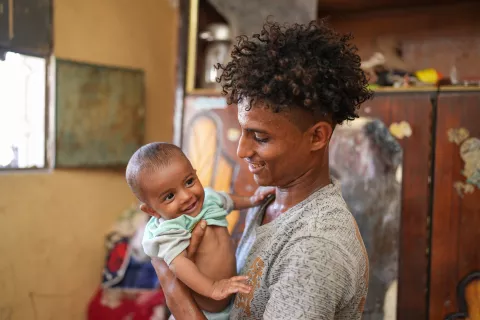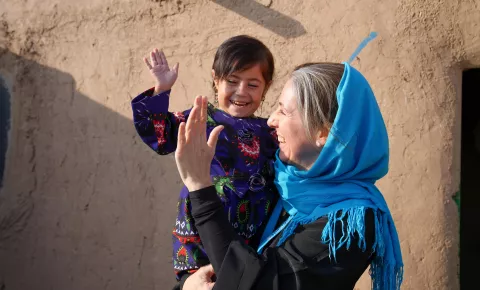Stopping one of the biggest threats to child survival
How UNICEF is working to end severe wasting.
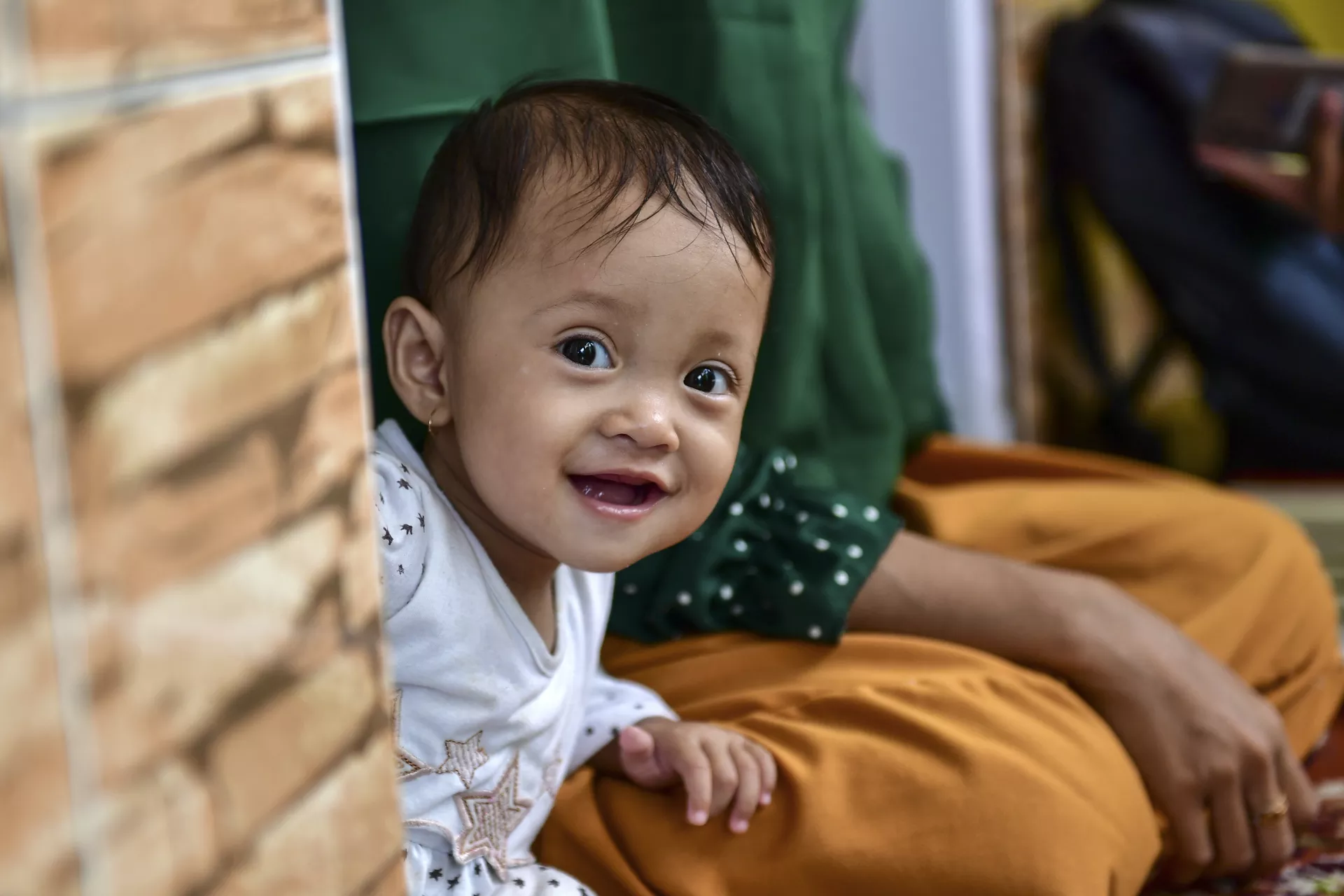
Many people have never heard of severe wasting, also known as ‘severe acute malnutrition’. But that doesn’t change how excruciatingly painful the condition – which is caused by a lack of nutritious food and repeated bouts of diseases such as diarrhoea, measles and malaria – is for the millions of children battling it. Children with severe wasting are thin and frail. Their immune systems are weak, leaving them vulnerable to developmental delays, disease and death.
Around 1 in 5 deaths among children under 5 are attributed to severe wasting. But while the scale of the problem is clear, so are the solutions – including early detection, expanding treatment services, and increasing access to lifesaving ready-to-use therapeutic food (RUTF).
UNICEF is working with partners across the globe to support the early detection and treatment of children with wasting and other life-threatening forms of malnutrition – to save their lives and put them on the path to healthy growth and development.

Detection
Young children who have gone without food rapidly lose a lot of bodyweight, often exacerbated by bouts of infectious diarrhoea, until they become so thin and weak that they are unable to eat normally. It can take all of a child’s energy just to keep breathing. UNICEF works with the World Health Organization (WHO) and other partners to develop guidance for the early detection and treatment of child wasting, and with governments to take action.

A vital tool for health workers in screening for malnutrition are mid-upper arm circumference (MUAC) tapes, which are used in community and hospital settings. There’s increasing evidence that the MUAC tape is helping improve awareness of malnutrition among mothers and is enabling earlier detection of severe wasting among children. This is the fifth visit to the health centre for Ahmed, pictured above. And it could be his last! The MUAC measurement shows Ahmed is now in the ‘green zone’, which means he’s no longer severely acutely malnourished.

Local communities play an essential role in providing parents with the support they need to help identify and prevent malnutrition. In Bevoalavo village, Madagascar, parents have received training on how to use the MUAC tape for malnutrition screening.

Reliable height and weight measurements are essential for monitoring nutrition and health interventions and are key indicators of stunting and wasting among children under age 5. Stunting and micronutrient deficiencies can have devastating and enduring impacts on children’s physical growth and cognitive potential.
Treatment
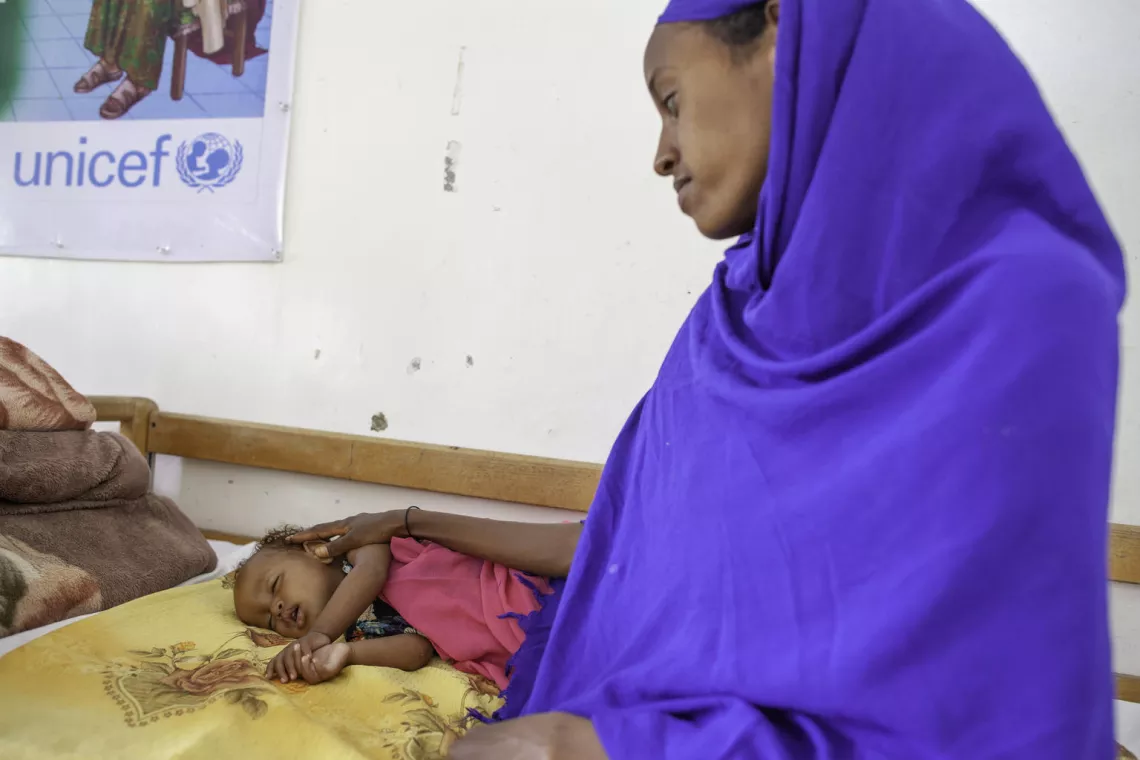
Hundreds of thousands of children in Somalia are at risk of developing severe wasting. Three consecutive seasons of failed rains, combined with ongoing conflict in many parts of the country, have forced families to take extreme measures to survive. Children under five are among the most vulnerable as the drought worsens, and access to food and milk is scarce due to rising commodity prices and livestock losses.

In Yemen, after more than seven years of war and economic decline, around 17.4 million people are in need of food assistance, while a growing portion of the population is struggling with emergency levels of hunger. UNICEF is prioritizing lifesaving treatment and preventive acute malnutrition services in the country, and during 2022 aims to admit more than 360,000 children aged 6 to 59 months with severe acute malnutrition for treatment.
“It hurt to see my baby sick, but he’s now getting better,” says Fatima, pictured above. Baby Saleh was malnourished, but received around the clock care. “Before he had fever, diarrhoea. But now he’s improving.”

Jenty Victor has been attending UNICEF’s nutrition programme in Yambio, South Sudan, for four weeks. “She couldn’t keep down what we were giving her, and she got malnourished,” says her mother, Margret. Jenty was diagnosed with severe acute malnutrition and treated using RUTF, which is a high-calorie nut paste given as a medical treatment that can literally mean the difference between life and death for severely malnourished children. It’s a simple, effective and affordable solution.
“She very quickly got her energy back,” Margret says. “You can see how much she likes it.”
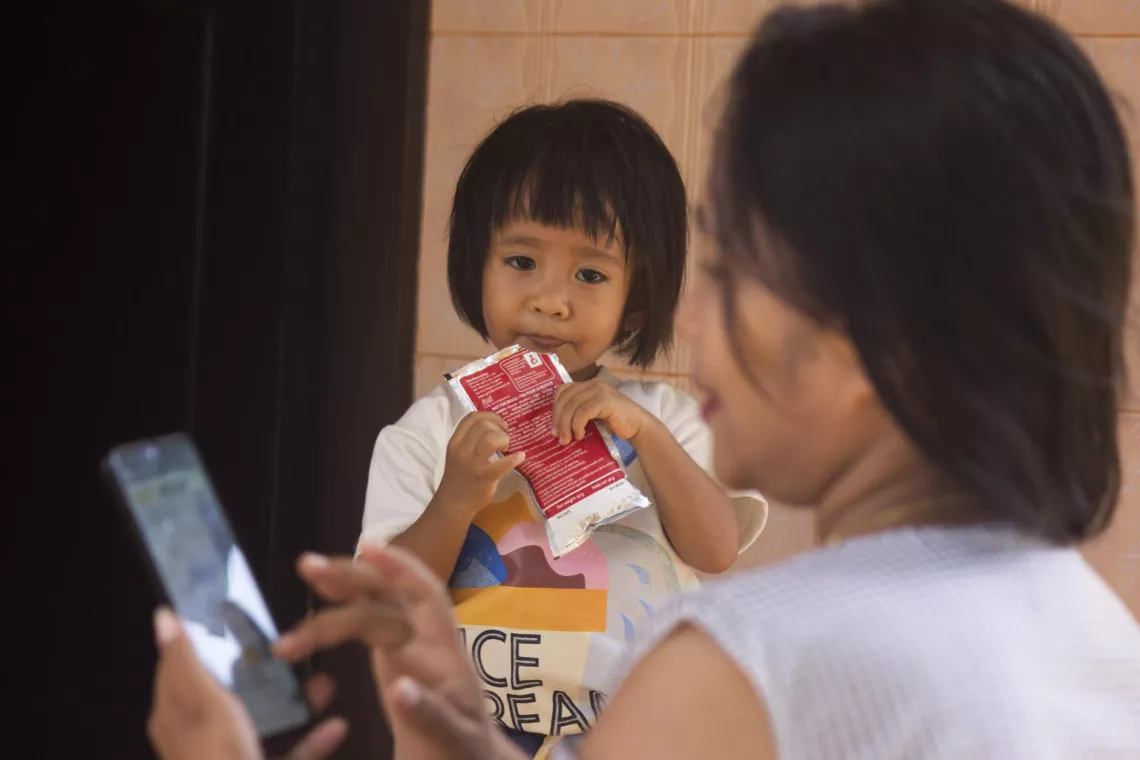
COVID-19 pandemic-related closures and physical distancing measures meant it was difficult for many families to access support services they needed, including around nutrition. With that in mind, UNICEF and the local government in Kupang – a district in Indonesia with a relatively high prevalence of malnutrition – piloted a chatbot programme to provide support.
The chatbot, which worked through WhatsApp, provides parents and health workers with an online counselling platform to discuss children’s health and nutrition, as well as access to resources and information to ensure children received the nutrition.

More than 245,000 children under 5 in Mali are suffering from severe acute malnutrition.
In response, UNICEF is working closely with the government and other partners to provide lifesaving treatment for children suffering from severe acute malnutrition through in-patient treatment centres.
Prevention

In Yemen, UNICEF is working with partners to empower new and expecting mothers with accurate information on nutrition. With the support of the UK Foreign, Commonwealth and Development Office, for example, UNICEF holds awareness sessions for mothers at training centres and clubs where mothers can learn about the importance of breastfeeding, complementary feeding, the dangers of malnutrition, and primary care options, among other things.

Breaking the stubborn intergenerational cycle of malnutrition requires a clear focus on nutrition from the beginning of a mother’s pregnancy to the child’s second birthday – those unique 1,000 days when the foundations for health, growth, and development across the lifespan are established. In the northeast of the Democratic Republic of the Congo, UNICEF-supported partner Caritas has provided malnutrition treatment centres where information about good dietary practices is shared with women.

UNICEF is committed to ensuring children have access to lifesaving services, such as nutritional screening services for preventing and treating acute malnutrition. In the activity pictured above, games and drawings are used to share important messages about the importance of breastfeeding. Pregnant and lactating mothers also received hygiene kits.
The value of treating severe wasting is beyond lifesaving – it also helps prevent the lasting damage that severe wasting can wreak on children’s physical and mental development. Ending global hunger and malnutrition won’t happen overnight. But with strategic investment in proven, affordable ways to prevent and treat severe acute malnutrition we can save lives now – and work towards a world where no child wastes away and dies.

